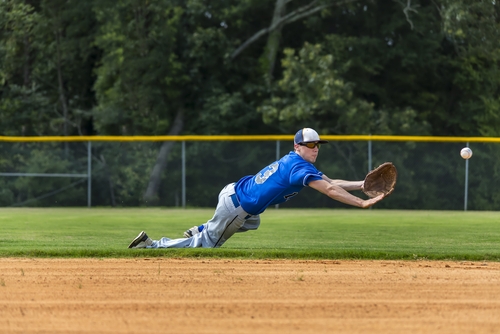
Rick Johnston is a former Canadian national team member and the Co-Founder/Director of Baseball Operations at The Baseball Zone in Mississauga, Ontario.
The art of fielding a ground ball successfully takes years and years of fundamental practice of learning how to read balls off the bat; creating angles; learning the pursuit speed toward balls; using the feet to take the glove to the ball; manipulating the glove to ensure it is squared up to the ball; and creating rhythm and flow amongst numerous other fundamental factors. When training your infielders in the development of fielding ground balls, don’t ever neglect the numerous classifications of types of ground balls. No matter what the fundamental concept is, the eight essential ground ball classifications are the following:
1. Right at the Infielder...the routine play; must be made as often as possible; it is the ball more infielders boot simply because it is routine. Infielders can become very complacent when a routine ground ball is hit at them. They often will take for granted this will be an easy play and then OOPS, the clank happens. Become a master at the routine play. Build confidence and self-esteem that will lead into making a show-stopping play later.
2. Left and Right...many times infielders will work only to their strong side, i.e. the glove side. Think of taking grounds balls to both sides like a switch hitter. If the switch hitter takes 100 swings from the right side he must do the same from the left. Well if an infielder is taking 25 ground balls to the left, make sure they take 25 to the right.
3. Flats... these are ground balls that take the infielder out toward the outfield, causing them to have to fight to get some depth, then re-direct their body toward the direction of the throw destination. At 3B, the flat would be to the left, out in the 5/6 hole; at SS, to the left, out toward and possibly behind second base; at 2b, out to the left, in the 3/4 hole. Each one of these “flats” will require the infielder to “right the ship” to make a throw to first base.
4. Deep...this is considered deep to their back hand. Very difficult balls to get to and even more difficult to get off a throw with any type of velocity or accuracy. Infielders need to see how much range they have; how much arm strength and ball carry they can get on their throws. They also need to decide when making these long throws how to use the ground to bounce the ball over to first base.
5. High Hopper...these are balls that when the infielder reads the first hop down sharply off the ball, they must move aggressively at the ball. Sitting back on this type of ground ball will only lead to fielding balls at incorrect hops and placing massive amounts of pressure on the infielder to get rid of the ball. Remember, first hop high...GO and GET it!
6. Slow Roller...similar to the high hopper, the infielder must move aggressively toward the ball and decide on a bare hand or two hand pick up. If using the bare hand, the infielder must avoid slapping or picking the ball but instead almost using the arm and hand as a pendulum to scoop the ball up off the ground.
7. Line Drive Hops...this is the one hopper, where the infielder needs to try and get the eyes below the flight of the ball. Getting below the ball with the eyes assists in the visual read. Often times on these one hop LD’s, the infielder will need to get the body turned slightly sideways to set the position of the body as early as possible. Moreover, it will help them decide if they will field the ball on a long hop or a short hop pick.
8. The Dreaded In-Betweener...very tough one to work on, in fact, the infielder is actually trying to avoid this hop. But, due to poor reads off the bat, poor angles or poor pursuit speed toward ball, they will turn routine grounds balls into tweener hops. Even though this is considered the avoidance hop, it’s going to happen, so work on the recovery movement.
Rick Johnston
Source: http://www.thebaseballzone.ca